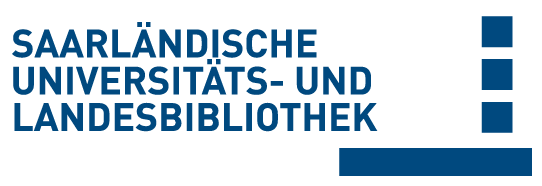Please use this identifier to cite or link to this item:
doi:10.22028/D291-26040 | Title: | GPU data structures for graphics and vision |
| Other Titles: | GPU-Datenstrukturen für Computergraphik und Bildverarbeitung |
| Author(s): | Ziegler, Gernot |
| Language: | English |
| Year of Publication: | 2010 |
| SWD key words: | Paralleler Algorithmus Graphik-Hardware Graphikprozessor Computergraphik Bildverarbeitung Dreidimensionale Bildverarbeitung Quad-Baum |
| Free key words: | GPU Echtzeit Octal-Baum GPU computer vision computer graphics real-time |
| DDC notations: | 004 Computer science, internet |
| Publikation type: | Dissertation |
| Abstract: | Graphics hardware has in recent years become increasingly programmable, and its programming APIs use the stream processor model to expose massive parallelization to the programmer. Unfortunately, the inherent restrictions of the stream processor model, used by the GPU in order to maintain high performance, often pose a problem in porting CPU algorithms for both video and volume processing to graphics hardware. Serial data dependencies which accelerate CPU processing are counterproductive for the data-parallel GPU.
This thesis demonstrates new ways for tackling well-known problems of large scale video/volume analysis. In some instances, we enable processing on the restricted hardware model by re-introducing algorithms from early computer graphics research. On other occasions, we use newly discovered, hierarchical data structures to circumvent the random-access read/fixed write restriction that had previously kept sophisticated analysis algorithms from running solely on graphics hardware. For 3D processing, we apply known game graphics concepts such as mip-maps, projective texturing, and dependent texture lookups to show how video/volume processing can benefit algorithmically from being implemented in a graphics API.
The novel GPU data structures provide drastically increased processing speed, and lift processing heavy operations to real-time performance levels, paving the way for new and interactive vision/graphics applications. Graphikhardware wurde in den letzen Jahren immer weiter programmierbar. Ihre APIs verwenden das Streamprozessor-Modell, um die massive Parallelisierung auch für den Programmierer verfügbar zu machen. Leider folgen aus dem strikten Streamprozessor-Modell, welches die GPU für ihre hohe Rechenleistung benötigt, auch Hindernisse in der Portierung von CPU-Algorithmen zur Video- und Volumenverarbeitung auf die GPU. Serielle Datenabhängigkeiten beschleunigen zwar CPU-Verarbeitung, sind aber für die daten-parallele GPU kontraproduktiv . Diese Arbeit präsentiert neue Herangehensweisen für bekannte Probleme der Video- und Volumensverarbeitung. Teilweise wird die Verarbeitung mit Hilfe von modifizierten Algorithmen aus der frühen Computergraphik-Forschung an das beschränkte Hardwaremodell angepasst. Anderswo helfen neu entdeckte, hierarchische Datenstrukturen beim Umgang mit den Schreibzugriff-Restriktionen die lange die Portierung von komplexeren Bildanalyseverfahren verhindert hatten. In der 3D-Verarbeitung nutzen wir bekannte Konzepte aus der Computerspielegraphik wie Mipmaps, projektive Texturierung, oder verkettete Texturzugriffe, und zeigen auf welche Vorteile die Video- und Volumenverarbeitung aus hardwarebeschleunigter Graphik-API-Implementation ziehen kann. Die präsentierten GPU-Datenstrukturen bieten drastisch schnellere Verarbeitung und heben rechenintensive Operationen auf Echtzeit-Niveau. Damit werden neue, interaktive Bildverarbeitungs- und Graphik-Anwendungen möglich. |
| Link to this record: | urn:nbn:de:bsz:291-scidok-39699 hdl:20.500.11880/26096 http://dx.doi.org/10.22028/D291-26040 |
| Advisor: | Seidel, Hans-Peter |
| Date of oral examination: | 6-May-2011 |
| Date of registration: | 1-Jun-2011 |
| Faculty: | MI - Fakultät für Mathematik und Informatik |
| Department: | MI - Informatik |
| Collections: | SciDok - Der Wissenschaftsserver der Universität des Saarlandes |
Files for this record:
| File | Description | Size | Format | |
|---|---|---|---|---|
| thesis_submit.pdf | 17,25 MB | Adobe PDF | View/Open |
Items in SciDok are protected by copyright, with all rights reserved, unless otherwise indicated.

